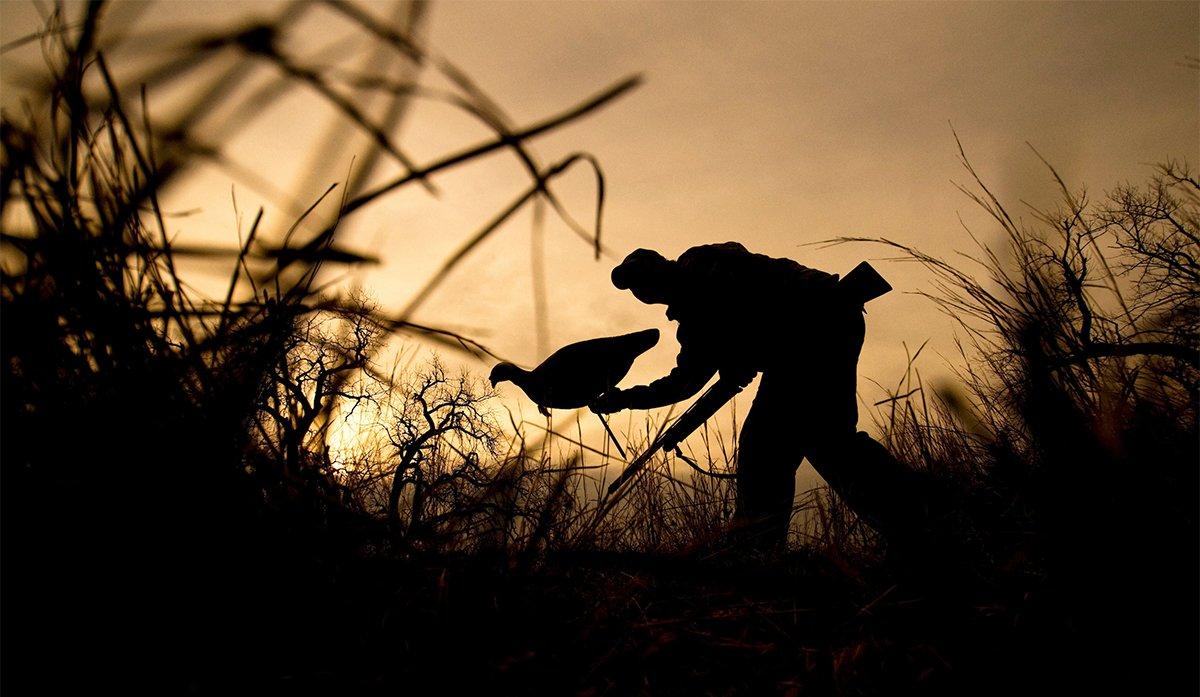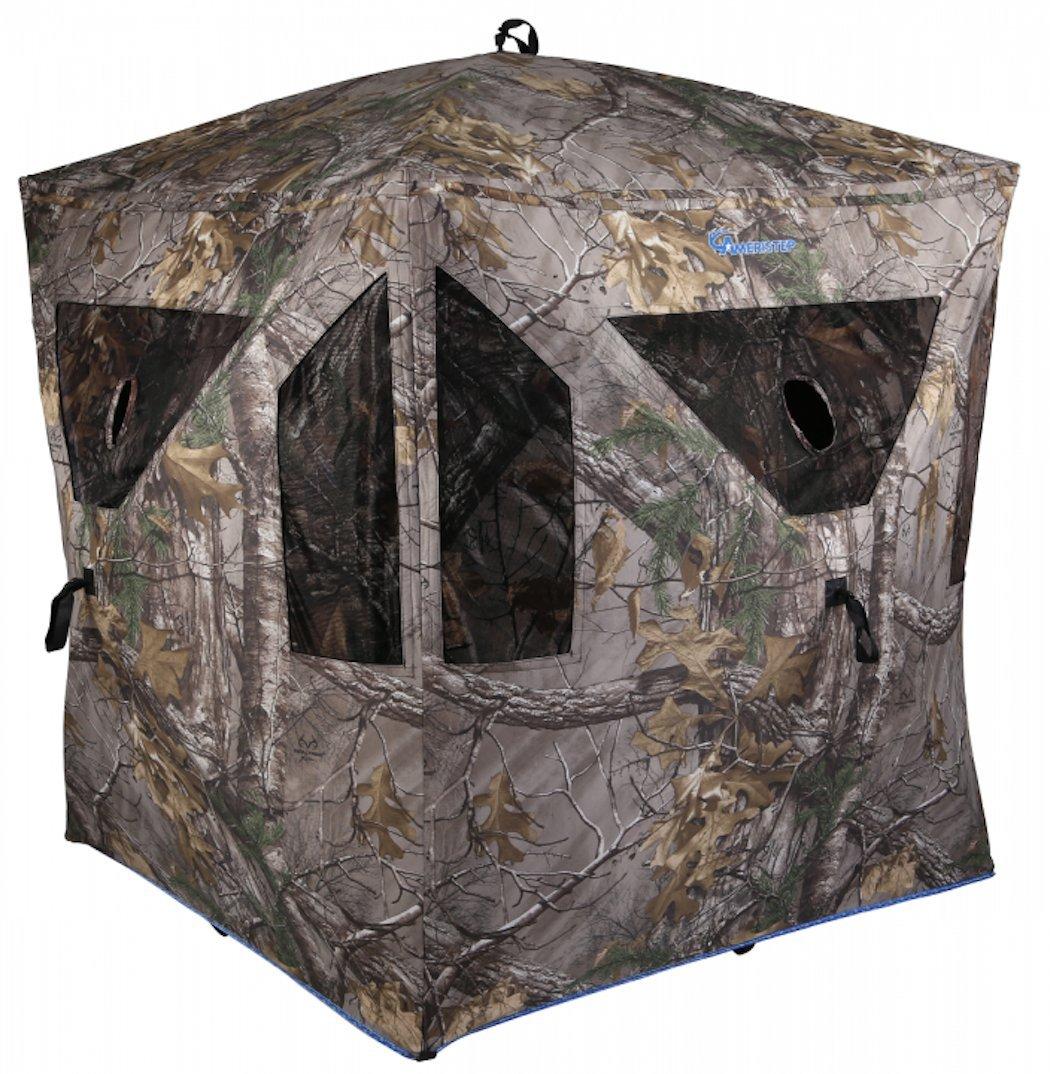And 3 More Reasons You Should
The use of turkey hunting decoys in the fall is smart or stupid, depending.
First, some reasons why you shouldn't use decoys when fall turkey hunting.
1. Either-Sex Turkey Hunts
In many of the 42 states permitting fall turkey hunting, either-sex birds are legal to take.This means it's important to identify your target as a turkey, but less so as a gobbler or hen.
These days, many turkey hunting decoys surely look real. A silhouette of one or more is truly convincing. When combined with our next reason, it's not really such a good idea.
And since so many states offer either-sex fall turkey hunts, some might argue you should leave the turkey decoys home until spring. Period.
Bonus Read: How to Hunt Fall Turkeys
2. Fall Turkey Rifle States
I grew up in north-central Pennsylvania, a region of the state and country that remains remote even to this day. Rifles for fall turkey hunting were and still are legal here. That's true for some other locations around the United States.
Viewed from a distance by a rifle hunter, turkey decoys combined with calling, well, you get the idea. Maybe not so safe, eh?
Truth is, in my part of the Keystone State, for some traditionalists fall turkey hunting is a slow walk, watch and call kind of deal. It's a tradition of ridge-runners who "still hunt" the so-called big woods. There's a fluorescent orange requirement while moving, worn over your camouflage. That's part of the basis of the legal rifle deal. Folks sometimes take birds just outside shotgun range, but at reasonable distance for a .22 Hornet.
It goes without saying, we often combined squirrel hunting with our turkey chasing as PA teenagers.
3. Decoys Inhibit Your Movements
Sure, you can kill a fall turkey while hunting from a blind. We'll get to that shortly. But for some of us, fall turkey hunting means covering a lot of ground, often with a dog.
In years with abundant mast, lugging two or three turkey decoys from ridge to ridge to find roving birds is likely something you'd like to avoid. It's not even really necessary. Calling turkeys, say after a scatter, will allow birds returning to the break site to fix your location.
Ditch the decoys. But there are also some times when you should use turkey decoys.
4. Blind Hunting with a Bow
You've got patterned turkeys. You know what food source they're hitting. You've staked your pop-up blind near it. You want to add a look of confidence for turkeys coming into the field or wooded area.
Now you want those turkeys to present a good target. Decoys, as in spring, can help fix the positions of birds coming into range so you can take a clean, ethical shot on a standing bird.
Truth is, in fall, a bunch of turkeys might just ignore your decoys placed squarely in front of your blind. These birds are often curious though, and some - maybe the one you want - might just wander close. Take that killing shot.
Bonus Video: Turkey Anatomy and Arrow Placement
5. You're Hunting a Gobbler Gang
In the fall, gobblers over a year old often run together. Some are 18-months-old ("super jakes"). Some are even older. Pecking order, as always, is a factor. They square off. They fight. They keep track of other gobblers slipping into their territory. A red-headed decoy might draw some attention.
If you've scattered a group of fall gobblers, it often takes some time to get them to regroup. You can place standing gobbler decoys (those jake models are great for this), and give real turkeys a visual reference.
Bear in mind, safety rules with turkey decoy use as always.
Place decoys so an errant shot at the mistaken fake might not endanger you, rare as this might be. In rifle states, avoid use. In shotgun states, or better yet during bow-only hunts, it might just work.
Be safe. Have fun. Think like a turkey and another hunter seeing the decoys you've set out.
6. When You Know You're Alone
This is a tricky one. I've been on some turkey hunts around the country where I was assured of being the only guy on the property, only to see some other hunters, or hear the shot of an interloper trespassing on the ground. This is a reality, folks, even if it's pretty rare. Still, safety rules.
If you do know you're alone, maybe plunk out some decoys - especially in a high-traffic area full of turkey scratchings where birds have recently fed.
Sit. Wait. Watch. This could be great for a young hunter whose patience might be limited; even an older person new to the "long-sit" deal. You decide in the end whether turkey hunting decoys are for you in the fall.
For some of us, they're not.
Go here for more Realtree turkey hunting.
Follow us on Facebook.
[Editor's note: This Realtree.com blog post was first published Nov. 1, 2016.]








